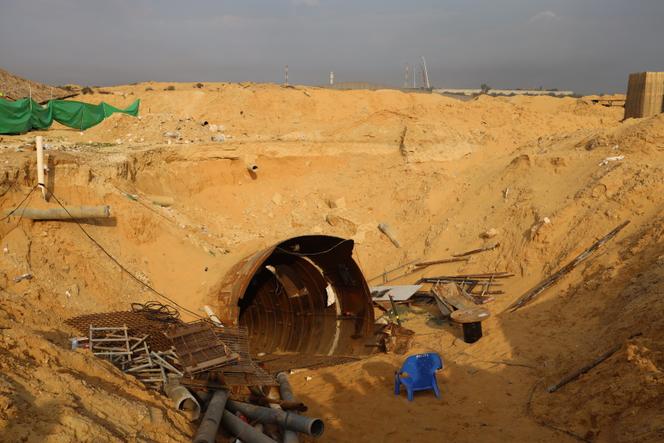


The entrance to the tunnel built by Hamas opens less than 400 meters from what was supposed to be the world's most effective protective barrier, a concrete wall some 10 meters high, equipped with high-tech sensors and dotted at regular intervals with powerful towers. Behind the barrier lies the imposing Israeli checkpoint of Erez, located to the north of the enclave. It was here, on October 7, that Hamas fighters carried out the most violent attack ever perpetrated on Israeli territory by a Palestinian group, killing 1,139 people. They broke through the high walls, blew up the thick fence, stormed barracks and kibbutzes, killed soldiers and civilians and took hostages.
Did the kidnappers take them back into the tunnel? This is what Colonel Olivier Rafowicz, one of the Israeli army spokespeople who organized the visit on Wednesday, December 27, for some 20 representatives of the international press, still forbidden free access to the Palestinian enclave by the Jewish state, suggested. "The network covers an area of 1.5 square kilometers. It has not yet been fully occupied. Around 4 kilometers of tunnel have been explored. Hamas designed and centralized the tunnel-building system," said Rafowicz. "Mohammed, Yahya Sinwar's brother, was in charge of building it, according to documents we found inside."
The army released a video recovered from the facility, showing the brother of the Hamas leader riding in a car inside a dark duct. It also claims to have found weapons and ammunition there, and asserts that some accesses were closed by armored doors. Some of the shafts go down to a depth of 50 meters. No exit leads into Israeli territory. This is the longest network discovered to date.
The entrance is located at the bottom of a large excavation dug into the ochre earth. At the threshold, a square shaft drops vertically to an unknown depth. The tunnel itself slopes steeply downward, on an east-west axis, parallel to the separation wall with Israel. "This is the main artery, from which several veins branch off. It's a typical Hamas construction, unlike the Hezbollah tunnels on the border between Israel and Lebanon," explained the officer. Narrow concrete piles top a vault made of the same material. At the top of the tunnel is a ventilation tube. Electricity and communications cables run along the sides.
Built within sight of the Israelis, the place was only spotted three or four weeks ago by members of the Yahalom unit, the Israeli army's special engineering forces, explained Rafowicz, without elaborating: "We had information to suggest that there was something there, but we discovered the entrance during the ground operation."
You have 60% of this article left to read. The rest is for subscribers only.
